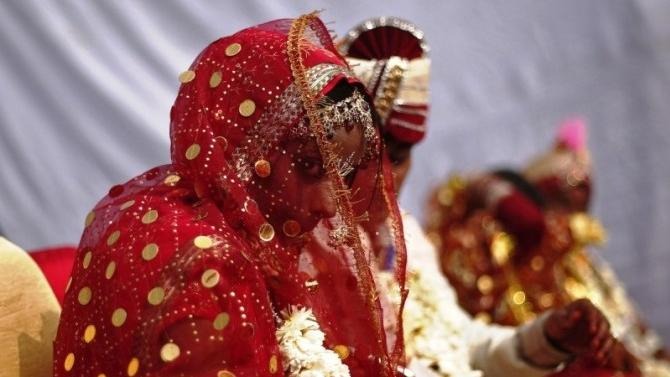Context:
Recently, the Supreme Court (SC) of India urged Parliament to ban child betrothals or child marriages, stating they violate children’s rights to choice and childhood.
Supreme Court Key Remarks on Child Rights:

This ruling emphasizes the need for effective implementation of the Prohibition of Child Marriage Act (PCMA), 2006 and aims to provide a framework for preventing and addressing child marriages.
- Under PCMA, which considers child marriage a criminal offense, girls below the age of 18 and boys under 21 are deemed to be children.
SC stated that “International law such as the Convention on the Elimination of All Forms of Discrimination Against Women (CEDAW) stipulates against betrothals of minors”
The SC further said that the Marriages fixed in the minority of a child also have the effect of violating their rights to free choice, autonomy, agency and childhood.
- The right to life and liberty in Article 21 of the Constitution was violated by child marriage.
The SC noted that since the enactment of the PCMA, the prevalence of child marriages in India has halved, decreasing from 47% to 27% in 2015-16 and further to 23.3% in 2019-2021.
Key Guidelines for Implementation:

- Legal Enforcement: The court mandates the appointment of dedicated Child Marriage Prevention Officers (CMPOs) at the district level to oversee and prevent child marriages.
- Quarterly Reporting by States and UTs: Each state and Union Territories (UT) will upload quarterly reports from CMPOs on their official websites to promote personal accountability.
- Performance Reviews by Ministries: The Ministries of Women and Child Development will conduct quarterly performance reviews of CMPOs and law enforcement to assess the effectiveness of child marriage prevention initiatives.
- District-Level Responsibility: The responsibility for preventing child marriages has been fixed at the district level, ensuring localized action and accountability.
- Establishment of Specialized Police Unit: A specialized police unit will be established to focus specifically on preventing child marriages, enhancing the enforcement of laws.
- Disciplinary Actions Against Negligence: Strict disciplinary and legal action will be mandated against any public servant found neglecting their duties regarding child marriage cases.
UNICEF Insights on Child Marriage Status in India
One in three of the world’s child brides live in India.
- Child brides include girls under 18 who are already married, as well as women of all ages who first married in childhood.

Over half of the girls and women in India who married in childhood live in five states: Uttar Pradesh, Bihar, West Bengal, Maharashtra and Madhya Pradesh.
- Uttar Pradesh is home to the largest number.
Nearly one in four young women in India (23 percent) were married or in union before their 18th birthday.
The prevalence of child marriage varies across states and union territories in India.

- At least 40 percent of young women were married before turning 18 in West Bengal, Bihar and Tripura, compared to 1 per cent in Lakshadweep.
Child brides face challenges in continuing their education.
- Fewer than 2 in 10 married girls remain in school.

